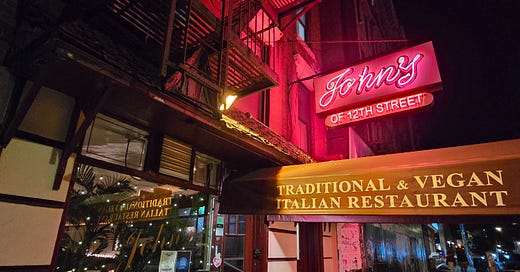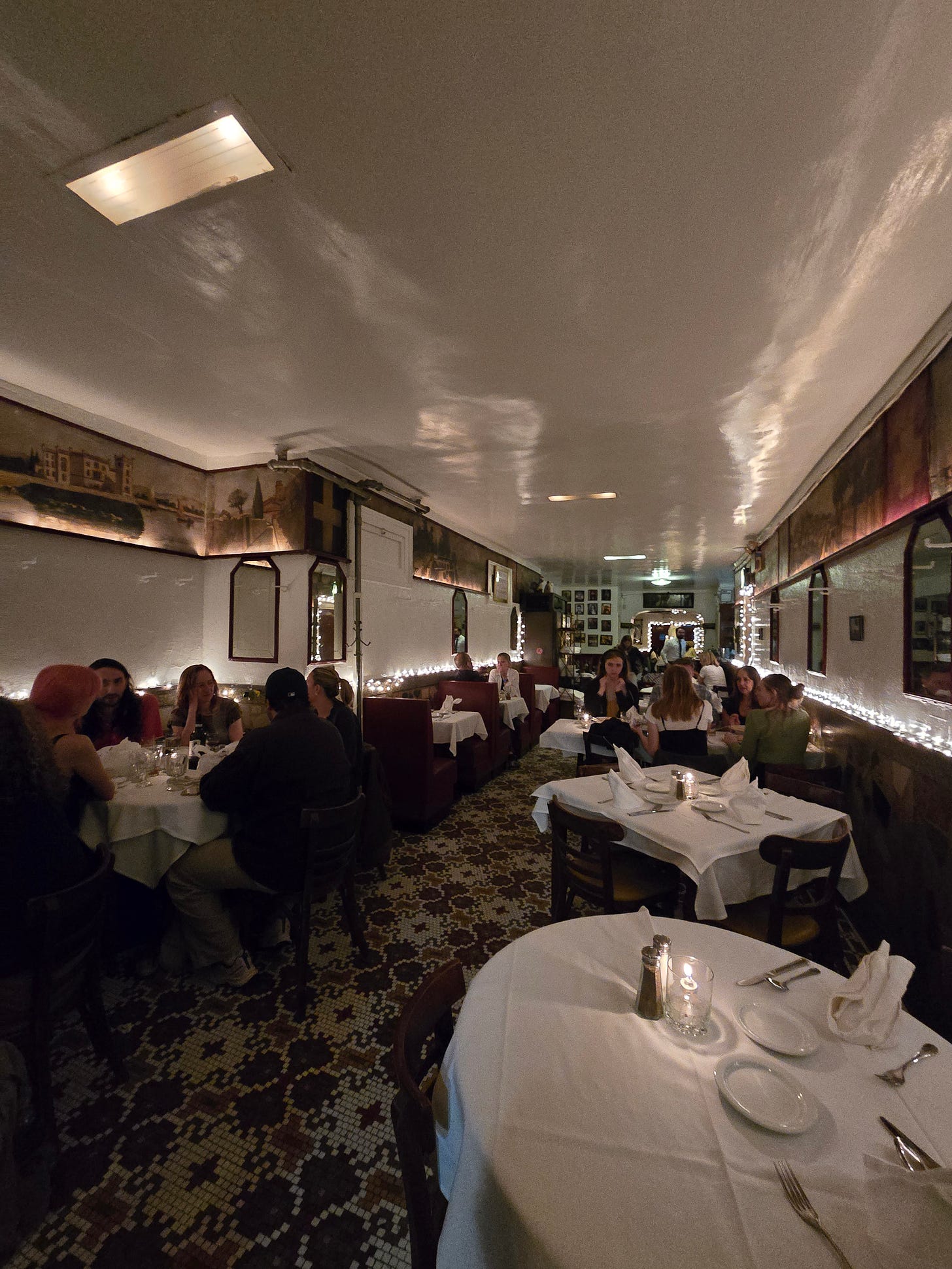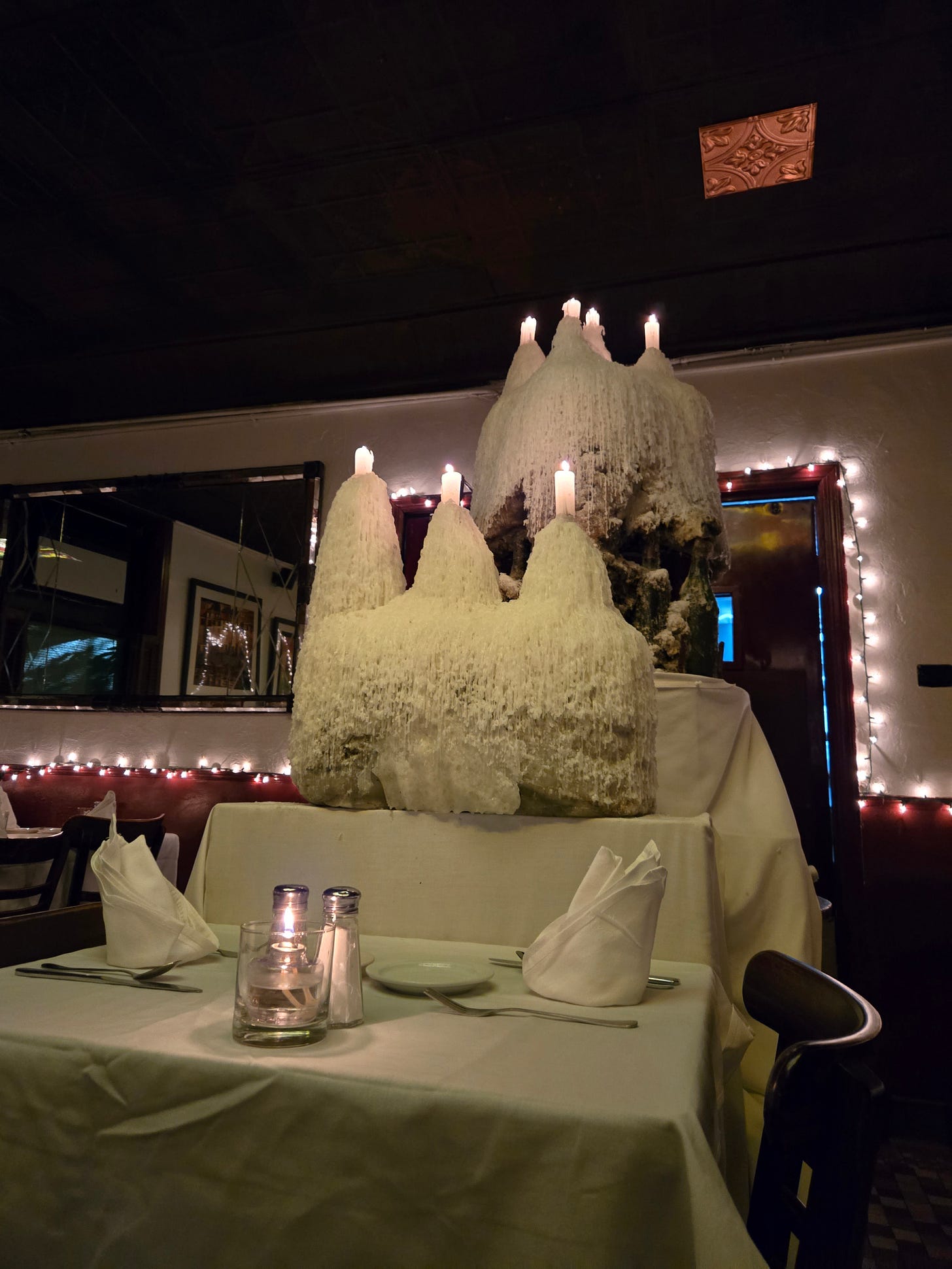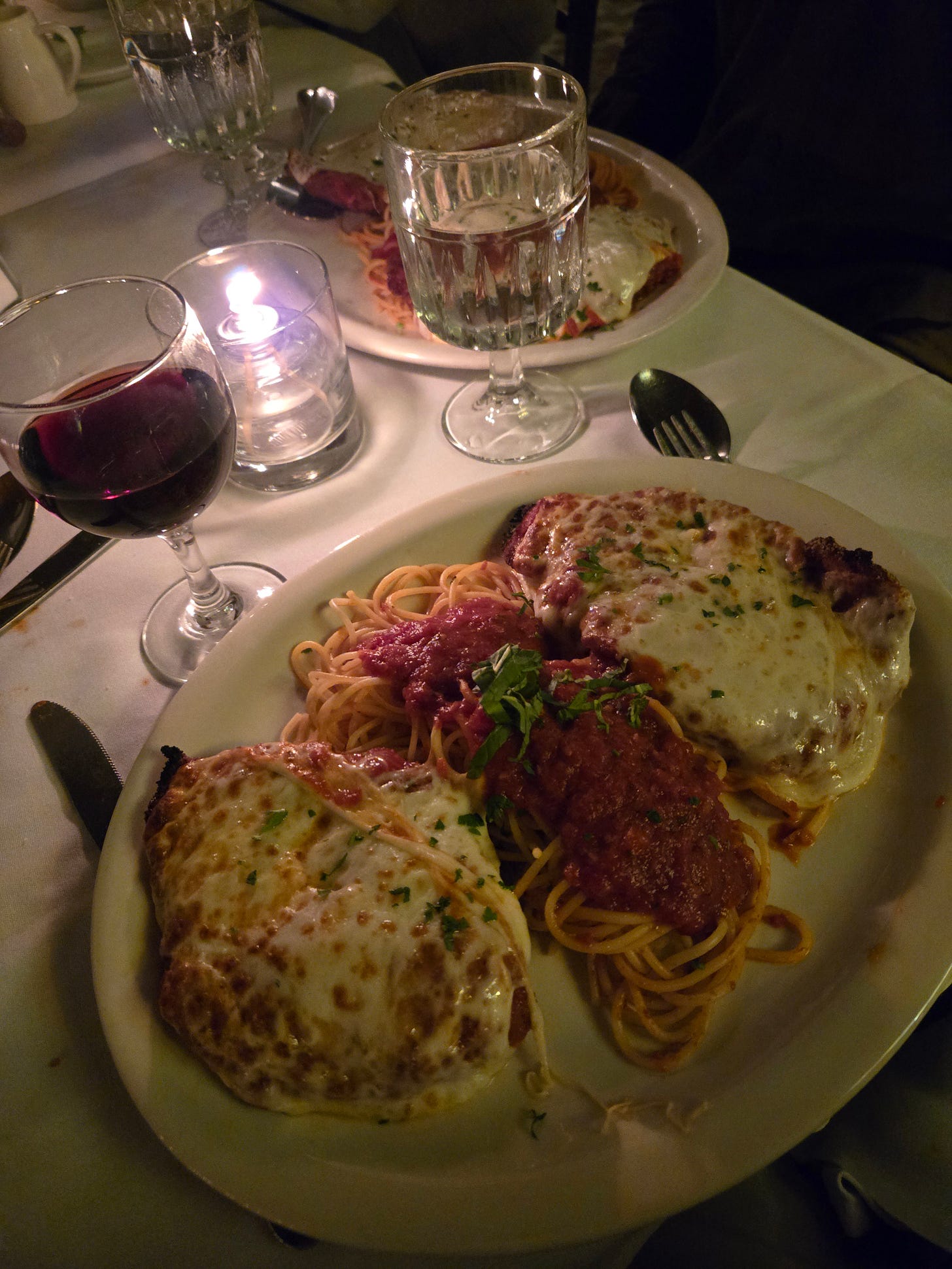New York is the cradle of Italian-American cooking. You could throw a stone and hit some 80 year old restaurant or another dishing out spaghetti with red sauce or veal marsala. Many of the most iconic dishes in the Italian-American canon have origin stories placing them right here. And many establishments are also intertwined with moments in the city's own history. If Frank Sinatra isn't claimed as a regular, then it's the mob, or people who played mobsters on TV, who have pictures hung on the walls. And this too has come to define the expectations for Italian restaurants across the nation.
John's of 12th Street occupies a privileged position within the Italian-American food world of NYC. It's not trying to live up to any expectations necessarily, but lives up to them anyway; it's the real deal at over 117 years old. Old Blue Eyes likely never walked through those doors, but they don't claim he did. It does have mafia connections though, with an infamous shootout involving Vito Genovese and Lucky Luciano occurring in the 1920s. But on the day-to-day, John's was a gathering place for immigrants of more humble extraction, anarchists and journalists and poets and the like, as well as construction workers who built some of the earliest skyscrapers. Today it's a quiet but colorful neighborhood mainstay. The type of place NYU professors at eat while their students traipse down to St. Mark's.
It also happens to be one of the final restaurants visited by Anthony Bourdain on Parts Unknown; the episode ends with a tribute to his life. The theme of the episode seems to be "the Lower East Side used to be a place full of life, and now everything I once loved has been priced out, leaving the place nearly unrecognizable." It's a hard watch, to be honest, but an essential one nonetheless.
He asks his guests about how things used to be, and why they're gone now. The guests, who include artists like painter Joe Coleman, and musicians Lydia Lunch and Richard Hell and Debbie Harry and Fab 5 Freddy, who all give diplomatic answers to his withering questions. Tony listens with an emotionless smile plastered on his face, not always seeming to really hear what's being said (he seems especially crestfallen when speaking with Lunch). He asks one of his buddies, artist/photographer Clayton Patterson, if all that will be left of New York is mostly empty corporate high rise apartments. Without missing a beat, he says yes. "Gentrification has affected the whole city. You have to now make a huge amount of money to be here... New York, there was always something that brough it back. But once you fill it with the corporate world, it's never going back. So we turned a corner, that we will never get back again. And so it's over... it's over." Ouch.
It's hard not to read the relentless onslaught of gentrification into Bourdain's untimely demise. You could tell he was hurting, not just in general, but at what he looked around and saw of New York, his home, the cradle of his youth. Things DO change, often for the worse. It's a stark difference in tone from his first New York episode from A Cook's Tour.
These are things I often think about myself in this line of work. I'm holding on to these things of the past, because I don't like the way the world is going, and if we can just hold on to these old institutions, they offer some sense of continuity between the past and the present. I don't want to lose the good things of the old world. But people, especially Americans, seem to think that the march of progress is both inevitable and inherently, for the most part, good. "Nothing lasts forever," they cynically say as they build luxury condos that will sit mostly unoccupied. So maybe I am fighting a losing battle. But there's something to be said for that as well. Not only do these iconic old places, which so often seem to be portals to another world, deserve to have someone fight for them, the developers and the landlords and the gentrifiers and the city officials deserve to be fought against. For whatever toll it took on Tony, we need to continue the fight, if nothing else than to pay tribute to his life and his philosophy. I promise you, we do not have to just lay down and take it.
So here I am at John's, which has a long tradition of hosting rebels, as I've already mentioned. It is obstinately resistant to change. The marble tiles and the painted scenes of the Italian coast are original from 1908. The menu is scarcely different from its earliest days, though they have added a large selection of vegan options, as well as pizza, in recent years. The waiters still wear bow ties. And that big candle in the back room still melts; as long as that flame stays lit, the East Village, as it once and always was, yet lives. That candle, by the way, was used as a signal during Prohibition; if the candle was snuffed, that meant the police were near, and patrons in their hidden speakeasy had to skedaddle. Even after Prohibition, the candle kept getting added to, taking on gargantuan proportions as streams of melted wax added to its girth. At one point around its centennial, it got so tall they had to cut it in half so it would continue to fit inside the restaurant. It's a tradition, a familiar sight to longtime residents of the Village. They even put a table for two beneath it, for what is probably the most romantic place to bring a first date or re-enact the spaghetti scene from The Lady and the Tramp.
John's offers a humble, if historic, setting. It's just a long, narrow dining room, with rickety wooden chairs and dusty stained glass. My father-in-law, who typically frequents the likes of Scalinatella or other uptown Italian ventures, called it a "cafeteria." But it's uncompromising, as the Village used to be. It's the kind of place where people will look at you funny if you can't put up with a little scruffiness in exchange for very good food. And that, John's certainly has.
There are two signature dishes that John's is known for: the veal meatballs, and the chicken parmigiana. Aside from spaghetti, these are probably the most essential dishes in all of Italian-Americana. So it's important that a place like John's does them well. Well, Guy Fieri vouches for the meatballs at least, and I have to say I agree with his appraisal. They're doused in a velvety tomato sauce, and impossibly tender without being at all mushy; your fork glides through them like a hot knife through butter. If I could make meatballs this perfect, I'd hardly ever need to eat out.
The chicken parm comes by the pair, which flank a nice helping of spaghetti - if your red sauce joint doesn't give you complementary spaghetti with your chicken parm, get the hell out of there fast. Now this parm is a remarkable example of Italian culinary magic. They're two full breasts, not pounded to particularly thin cutlets, and yet they are uniformly moist and tender, not dried out at all. The breading is remarkably thin, but stays crispy even under the sauce and the cheese, and they somehow fully cooked the chicken without burning the breading. I could never make something like this myself. It consititutes an understated kind of perfection, one that doesn't defy expectations, but rather fulfills them to the tee. John's leaves no crumbs, as it were.
That episode of Parts Unknown ends with a rendition of the song "You Can't Put Your Arms Around A Memory." Its intended interpretation at this point is ambiguous. Should we take from this that rather than holding onto the past, we should embrace the present as it is, because that's all we can still put our arms around? Or should we steadfastly remain what we are, ensuring that our traditions remain living things and not mere memories? Certainly that chicken parm is in no need of modernization. But maybe the best course of action is to strike a kind of balance; to not be stuck in the past, but to also not walk backwards into the future, either. I'm not really sure. But the candle keeps burning at John's, for whatever it's worth.








